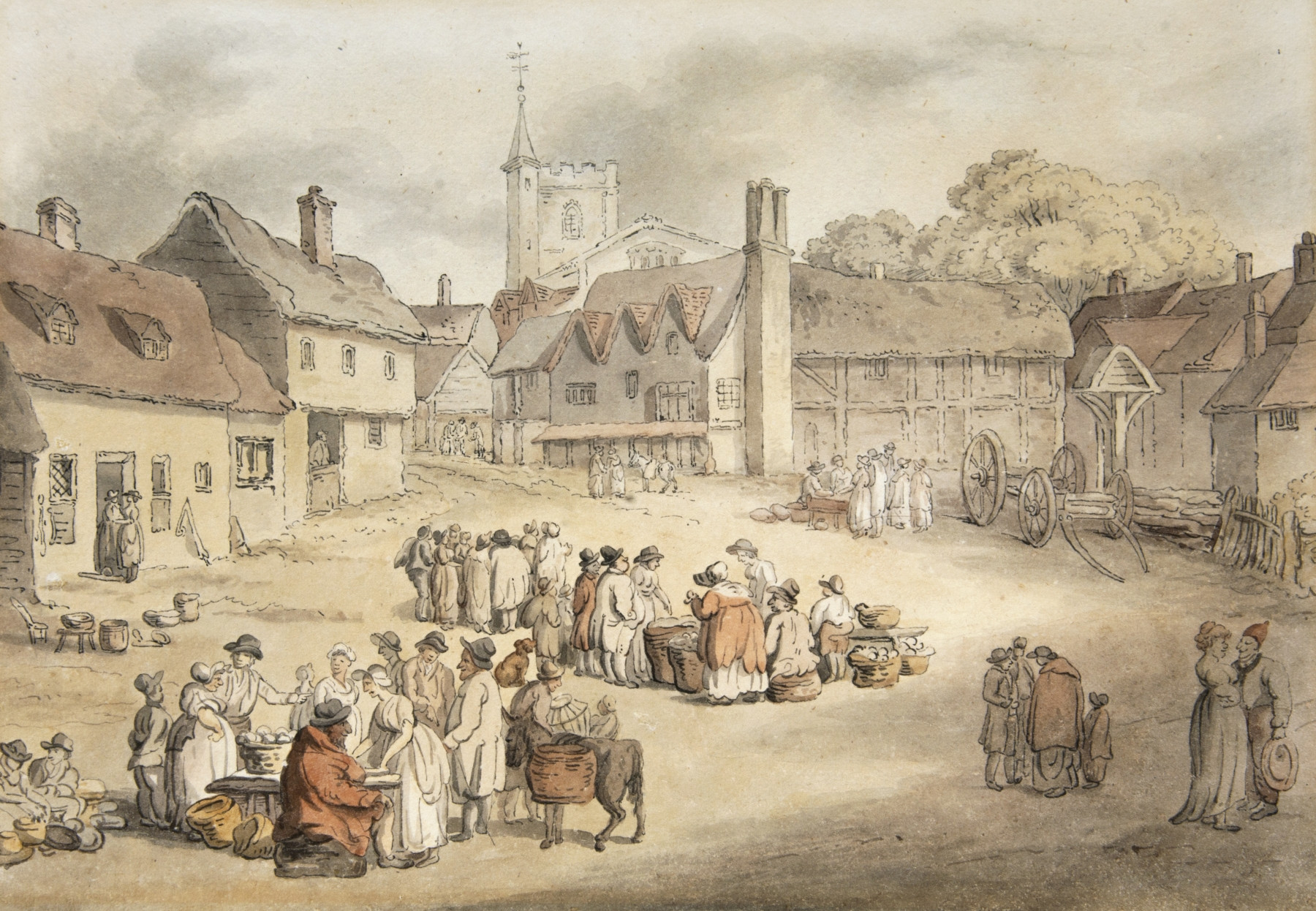
(click image to enlarge)
Thomas Rowlandson based the buildings that surround this village market on those at Wokingham, in Berkshire. Most are accurately placed, as is the Ship Inn, which sits at the centre of this image. However, All Saints Church has been moved from the right of the inn to a location behind it in order to create a focus to the composition.
All Saints Church was founded in 1180, but substantially rebuilt in the late fifteenth century in the form shown in this and other of Rowlandson’s drawings. However, it was restored and expanded in the mid 1860s by Henry Woodyer, the dormer windows being removed and the east end being rebuilt.
The Ship Inn is a 400-year-old institution, originating as a lodging house and becoming a functioning alehouse and coaching inn in about 1745. The main structure, as shown in Rowlandson’s drawings and as it still stands, dates from that time. However, it does retain a half-timbered sixteenth-century wing. The building retains a very distinctive large flank chimney with three shafts, which stands out at the centre of Rowlandson’s drawings.
Rowlandson based the present drawing on a more purely topographical one in the collections of the Morgan Library & Museum, New York, which is described as Hamlet and Church with Scaffolding on its Tower. Rowlandson has inscribed this ‘Oakingham’ in the bottom right, Oakingham being a corruption of the Saxon name Wokingham that was in use by the late eighteenth century.
Other versions of the view include Village with Cart and Figures (British Museum), A Village Scene Outside a Church (The Yale Center for British Art) and Country Fair for Hiring Servants (sold by the Chris Beetles Gallery to a private collection).